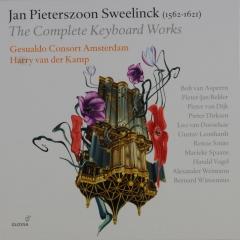
Hexachord Fantasia
Jan Pieterszoon Sweelinck
One of the giants of Dutch classical music. The keyboard and vocal music of Sweelinck (1562-1621) was enormously influential, especially on early German Baroque. This so-called Hexachord Fantasia is one of Sweelinck's masterpieces. A simple rising and falling scale of six tones is used as the basic material for an astonishingly rich composition.
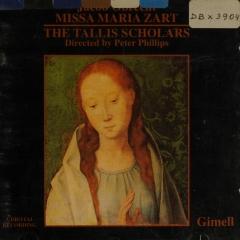
Missa Maria Zart: Agnus Dei
Jacob Obrecht
He spent most of his life in the Low Countries, but his music was famous all over Europe. Jacob Obrecht (ca. 1450-1505) is known for surprisingly long compositions. An example is this Missa Maria Zart, of which a complete performance lasts for about 70 minutes!
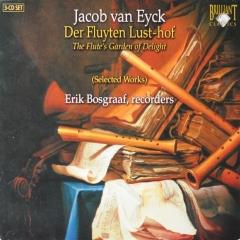
Doen Daphne d'Over Schoone Maeght
Jacob van Eyck
Living in the Dutch Golden Age (roughly the 17th century), Jacob van Eyck (1589-1657) was an extremely versatile musician and composer. He is most famous for his Fluyten Lust-Hof (Pleasure Garden for Flutes), a collection of music for recorder which was first published in 1644. This piece, based on a Dutch folk song, quickly develops into a series of virtuoso variations.
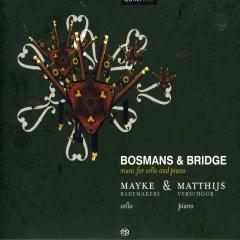
Nuit Calme
Henriëtte Bosmans
One of the Netherlands' foremost composers of the early twentieth century is Henriëtte Bosmans (1895-1952). As a daughter of two musicians, she quickly developed as a gifted musician and composer in her own right. The cello played a prominent role in her work, partly because of her relationship with the cellist Frieda Belinfante.
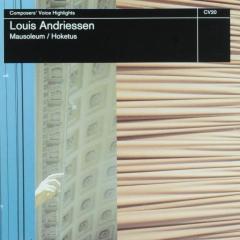
Hoketus
Louis Andriessen
Often is Louis Andriessen (1939 - 2021) referred to as the Netherlands' most famous contemporary composer in his home country and abroad. He was once one of the notorious Notenkrakers (musical note-crackers) who disrupted a concert in the Concertgebouw in 1969. This protest action resulted in experimental ensembles, such as De Volharding and Hoketus. Hoketus also became the title of an idiosyncratic composition, in which two halves of an ensemble interact in complementary fashion.
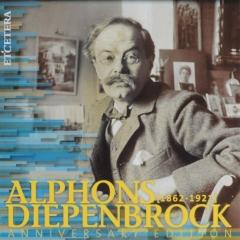
Elektra
Alphons Diepenbrock
After Sweelinck, it took three centuries before a composer with a comparable international reputation emerged in the Netherlands. This was Alphons Diepenbrock (1862-1921), belonging to the generation of Mahler, Strauss and Elgar. Diepenbrock was a kindred spirit of the innovating literary movement the Tachtigers. Nietzsche, Hölderlin and Verlaine also belonged to Diepenbrock's sources of inspiration. In 1920 he composed the incidental music for Sophocles' Elektra.
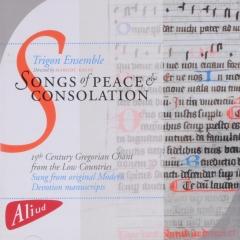
Met Desen Nijen Jare
Anonymus
The Devotio Moderna is a late 14th century religious movement, flourishing in the Low Countries and Germany. Central concerns were humility and simplicity, resulting most famously in Thomas à Kempis' The Imitation Of Christ. The Devotio Moderna also occasioned new religious musical trends, including the translation of Latin chants and prayers. Met Desen Nijen Jare (At the start of this new year) is a Dutch song for two voices.
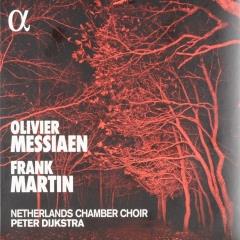
A Cette Heure Du Jour
Ton de Leeuw
He became not only an influential composer, but Ton de Leeuw (1929-1996) was also a teacher, philosopher, and writer. He played a seminal role in introducing serial music in the Netherlands, but after studying with the legendary ethnomusicologist Jaap Kunst, he became fascinated with music from non-Western cultures. He travelled to India and Japan, but was also inspired by ancient cultures from the Near East. A Cette Heure Du Jour is based on a French translation of an ancient Sumerian text.
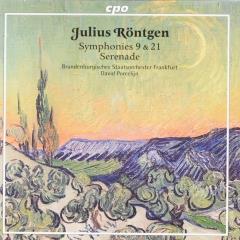
Bitonale Symfonie
Julius Röntgen
In the twenty-first century Julius Röntgen (1855-1932) experiences an increasing popularity in the classical music world. His chamber and orchestral music have received prominent performances and recordings, surprisingly often by non-Dutch performers. This brilliant 'bitonal' symphony, his Ninth, has just one movement, lasting little more than fifteen minutes.
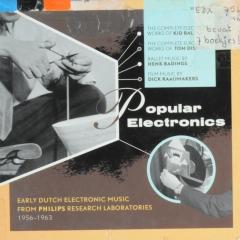
Syncopation
Tom Dissevelt
Working in the Philips Natlab (Physics Laboratory) in Eindhoven, Tom Dissevelt (1921-1989) and Dick Raaijmakers (1930-2013) were pioneers of the Dutch electronic music scene. Together they produced a series of historic electronic works, often mixing classical techniques with a jazzy and popular style. Composed in the late fifties, these pieces are amazing precursors of later electronic music.